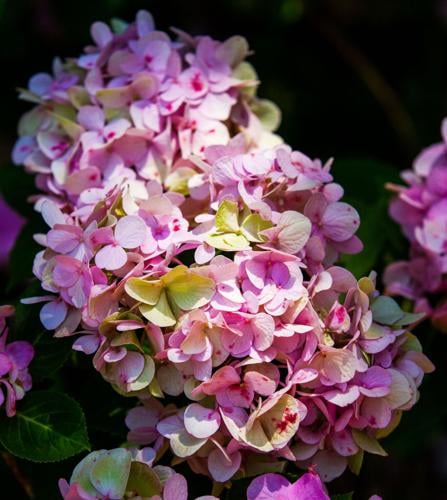Hydrangeas speak of grandmother's garden, bridal bouquets and frothy floral arrangements.
And now they are showing off all over the South.
But these beautiful bloomers, of which there are about 70 species and hundreds of varieties, are found all around the world.
Some have been on the North American continent for millions of years, as evidenced by fossils of hydrangea alaskana found at Jaw Mountain in Alaska and dating 66 million to 23 million years ago.
Others, like the common bigleaf hydrangea with its large, showy flowers and traditional blue and pink rounded clusters, are native to China and Japan and came to the U.S. in the 1700s.
These gorgeous shrubs have a long-standing history around the world and are adored by many. The Royal Horticulture Society named the Runaway Bride hydrangea Plant of the Year in 2018, and the Miss Saori variety got the same award in 2014.
There are also hydrangeas native to the U.S., including the smooth leaf hydrangea and the oakleaf hydrangea, whose cultivation can be traced to the estates of George Washington’s Mount Vernon, Thomas Jefferson’s Monticello and James Madison’s Montpelier. They got seeds from American botanist William Bartram, who ran Bartram’s Nursery in Philadelphia with his father, John Bartram.
While dressing up your landscape, hydrangeas are also one of the most popular cut flowers, frequently used in wedding bouquets and flower arrangements.
Four types of hydrangeas are commonly found in the U.S.: bigleaf, oakleaf, panicle and smooth leaf.
Bigleaf hydrangeas are deciduous shrubs native to East Asia that grow well in USDA hardiness zones 5 to 9. They prefer partial sun and regular watering that should become more frequent during extreme heat. They grow well in both alkaline and acidic soil.
The color of the flowers is determined by the soil. In acidic soils, the blooms are blue while alkaline soil turns them pink.
Penny Mac is a bigleaf hydrangea named after Penny McHenry, the founder of the American Hydrangea Society, and is a selection of the Louisiana Super Plants program. Penny Mac sports large, rounded clusters of flowers referred to as mopheads. Growing 4- to 6-feet tall and 3- to 4-feet wide, these hydrangeas are blooming now and will put on another show in the fall.
Oakleaf hydrangeas, named because their leaves have an oaklike appearance, are native to the southeastern part of the country, and are commonly found growing in hardwood forests, on bluffs, in shaded ravines and along sandy streams as an understory shrub to oaks and pines.
They look healthiest when grown in well-drained, fertile, acidic soils in shade with some morning sun. The flowers are creamy white on branches up to a foot long. Oakleaf grows best in sandy loam and really don't do well in heavy clay soils.
Common varieties are Alice, Ellen Huff, Snow Flake and Snow Queen. All have excellent fall foliage color, and exfoliating bark adds to your landscape's aesthetic.
Some of the easiest to grow are panicle hydrangeas, which tolerate sun, heat, cold and just about any type of soil. They can take six or more hours of sun but prefer morning sun with afternoon shade.
The stunning limelight hydrangea, with its light green tint, is another Louisiana Super Plant. These deciduous shrubs can grow 8 feet tall and wide, and can tolerate full sun but prefer mostly sun with shaded afternoons. You can make a dramatic statement in your landscape by grouping several together.
Smooth leaf hydrangeas are a deciduous understory shrub that grows as far north as New York, down south to Florida and west to Texas.
Like other hydrangeas, it prefers shaded areas, but can grow in a range of soil types. It grows best in cool, moist and well-drained areas. Flowers bloom in white, blue and pink and are slightly flattened in rounded clusters. Annabelle is a variety that has almost pure white blossoms that form rounded globes of up to 10 inches.





